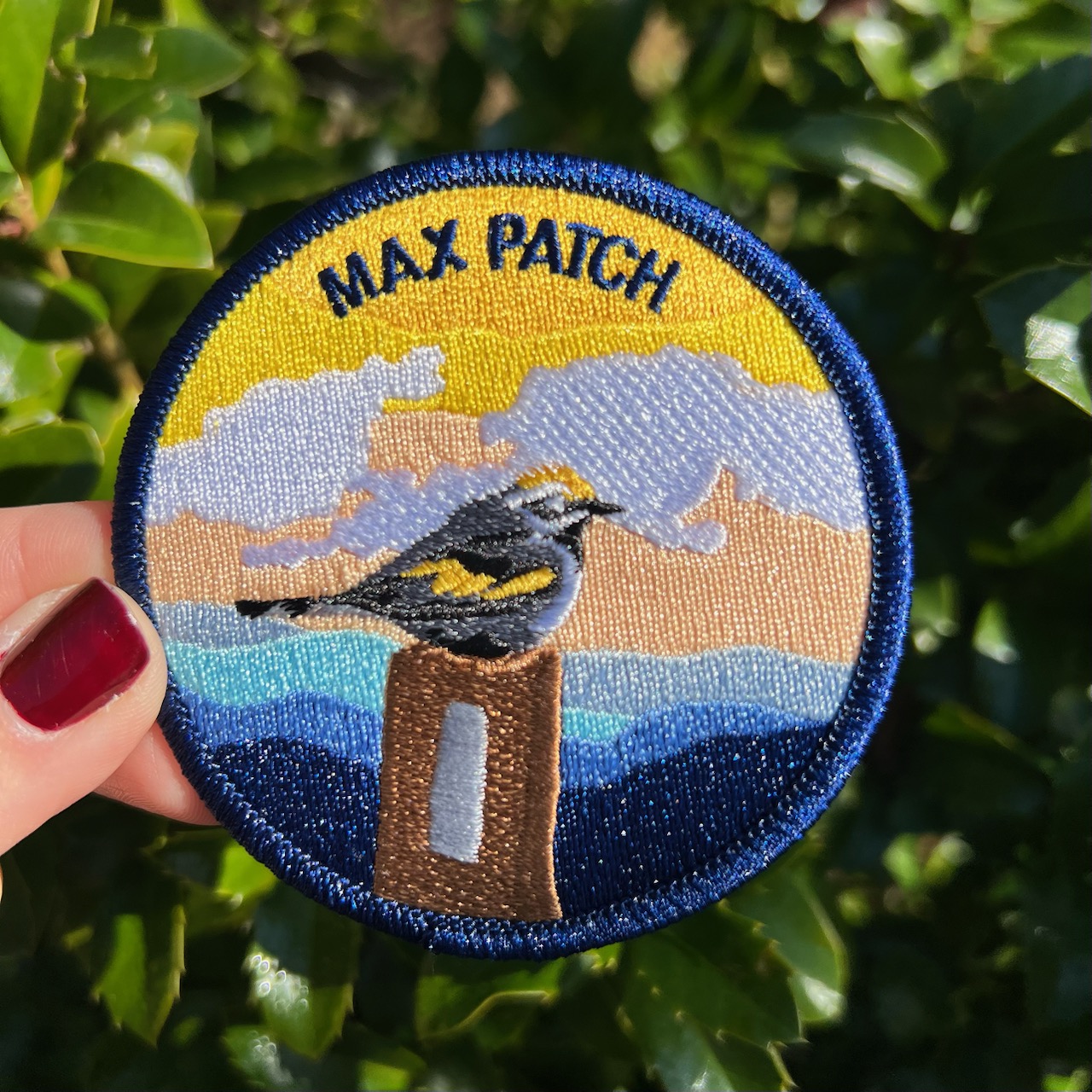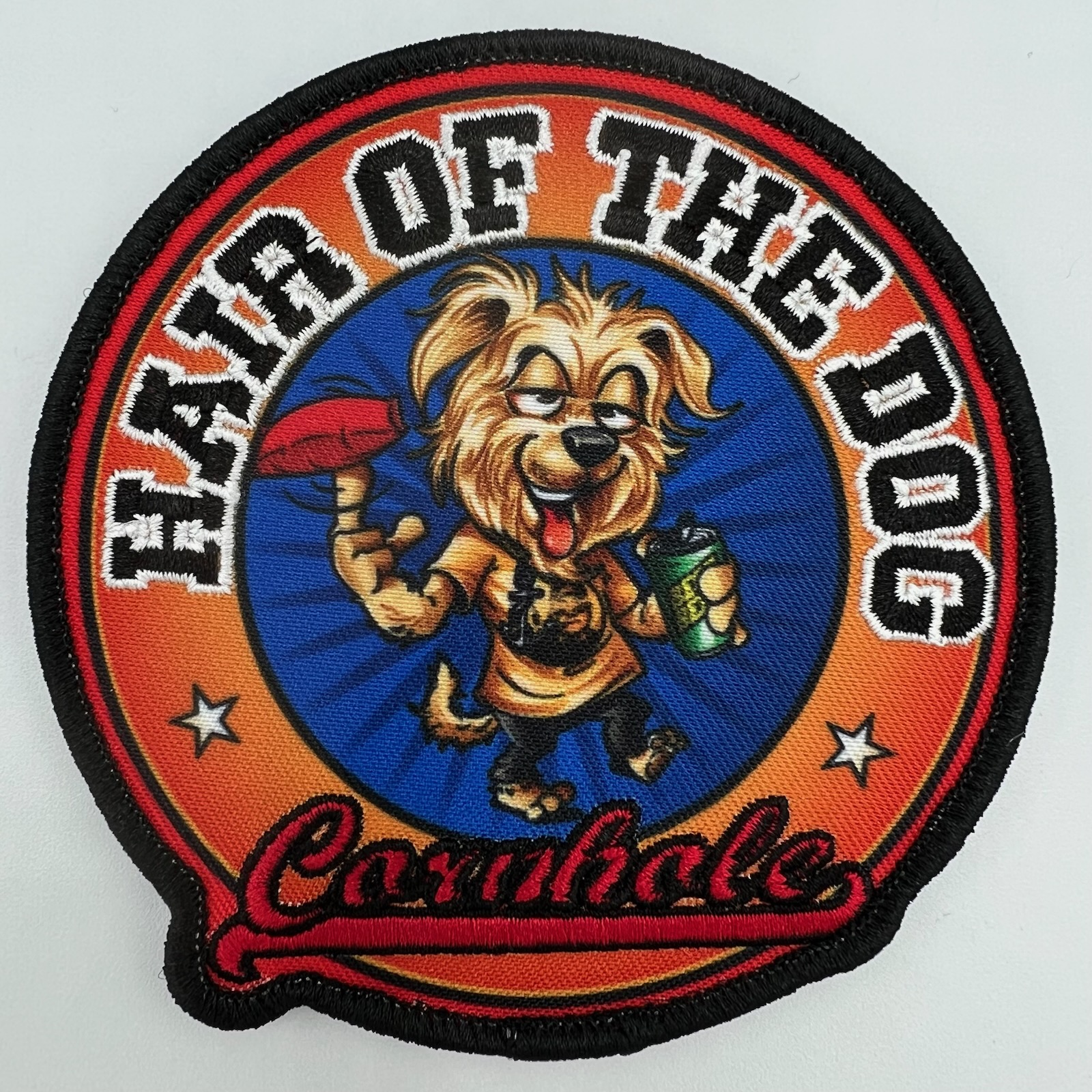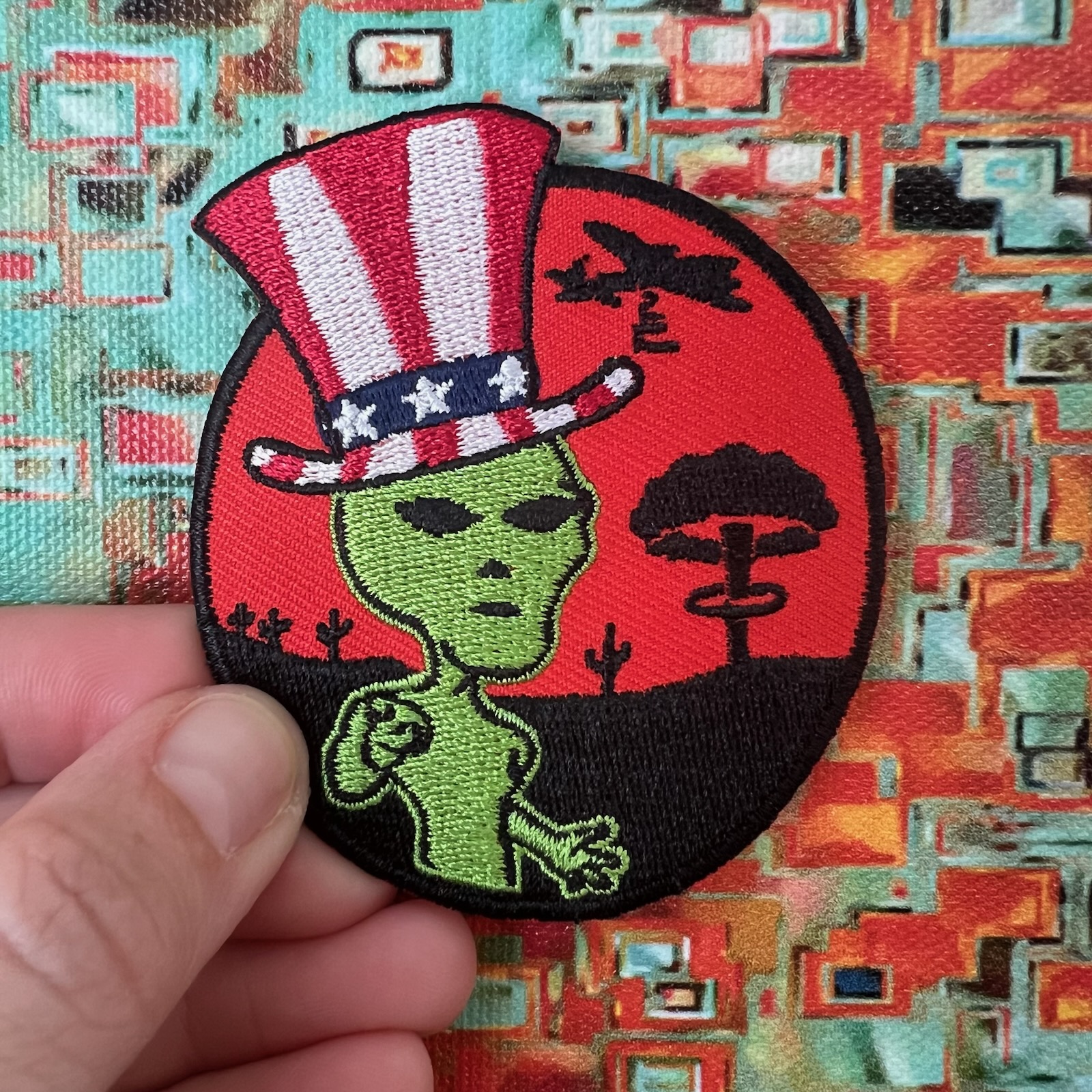Unraveling the History of Custom Embroidered Patches
Embroidered patches have been around for centuries and have played an essential role in human history. They have been used to signify rank, indicate affiliation, and even as a form of identification. Today, custom embroidered patches are a popular way to add a personal touch to clothing and accessories. In this blog post, we will delve into the rich history of embroidered patches, from their ancient origins to their modern-day uses in fashion. We will explore the different styles and techniques used throughout history, and how they have evolved over time. From military insignias to sports team logos, embroidered patches have a fascinating history that has made them a beloved accessory for people around the world. So, let's take a closer look at the intriguing world of custom embroidered patches!
1. Introduction: The allure of custom embroidered patches
Embroidered patches have a rich history that dates back centuries, captivating the fascination of people from various cultures and backgrounds. These intricate pieces of art have evolved from their ancient origins to become a prominent feature in modern fashion and self-expression.
The allure of custom embroidered patches lies in their ability to convey a multitude of messages and meanings. Whether they are used to represent an organization, commemorate a significant event, or simply add a touch of personal flair to clothing or accessories, these patches hold a special place in the hearts of individuals who appreciate their uniqueness and craftsmanship.
In ancient times, embroidered patches were a symbol of status and power, often worn by royalty and nobility. They were meticulously crafted by skilled artisans, using techniques that have been passed down through generations. These patches not only adorned garments but also carried cultural and historical significance, telling stories of conquests, achievements, and affiliations.
As time progressed, the popularity of embroidered patches spread beyond the elite circles and reached the masses. They became a means of identification for military units, scout groups, and sports teams, fostering a sense of belonging and camaraderie among members. In this context, patches served as a visual representation of shared goals, values, and accomplishments.
In the modern era, custom embroidered patches have found their way into the world of fashion, where they add a unique touch to clothing, bags, hats, and more. From high-end designer brands to streetwear labels, patches have become a popular form of self-expression, allowing individuals to showcase their interests, passions, and personal style.
The allure of custom embroidered patches lies not only in their aesthetic appeal but also in the stories and memories they hold. Each patch is a testament to the journey and experiences of its wearer, representing a piece of their identity.
In this blog series, we will embark on a journey through time, unraveling the captivating history of custom embroidered patches. From their ancient origins to their modern-day significance, we will explore the cultural, social, and artistic aspects that make these patches so intriguing. Join us as we delve into the world of embroidery and discover the hidden tales woven into every thread.
2. Ancient origins: The earliest known examples of embroidered patches
Embroidered patches have a rich and fascinating history that dates back to ancient times. The earliest known examples of embroidered patches can be traced back to ancient civilizations such as Egypt, China, and India. These civilizations valued the art of embroidery and used it as a means of personal expression, cultural identification, and social status.
In ancient Egypt, embroidered patches adorned the garments of Pharaohs and high-ranking officials. These patches were meticulously crafted using vibrant threads and intricate designs, often depicting symbols of power, authority, and religious significance. They were not only decorative but also served as a way to distinguish between different ranks and hierarchies within society.
Similarly, in ancient China, embroidered patches were highly prized and held symbolic meaning. They were used to denote membership in specific clans, military units, or as a mark of honor for achievements in battle or scholarly pursuits. The Chinese also developed sophisticated embroidery techniques, using silk threads and intricate stitching patterns to create visually stunning patches.
In India, embroidered patches were an integral part of traditional attire and cultural practices. They were commonly used in elaborate ceremonial costumes, such as those worn during weddings, festivals, and religious rituals. These patches often featured intricate motifs inspired by nature, mythology, and folklore, showcasing the exceptional craftsmanship of Indian artisans.
Throughout history, embroidered patches continued to evolve and adapt to different cultures and fashion trends. They found their way into military uniforms, sports team jerseys, and even punk rock fashion, becoming a popular form of self-expression and personal style.
Understanding the ancient origins of embroidered patches allows us to appreciate the artistry and significance behind these intricate pieces. Today, custom embroidered patches continue to be cherished for their ability to tell stories, represent identities, and add a touch of flair to garments and accessories. Whether it's a military insignia, a sports team logo, or a personal design, embroidered patches serve as a timeless link between the past and the present, carrying with them the legacy of craftsmanship and creativity from ancient civilizations.
3. Historical significance: Patches as symbols of rank, status, and affiliation
Throughout history, custom embroidered patches have served as powerful symbols of rank, status, and affiliation. From ancient origins to modern fashion trends, these intricate patches have carried deep historical significance and continue to make a bold statement today.
In ancient times, embroidered patches were used by various societies to denote social hierarchy and rank. They were prominently displayed on garments worn by military personnel, government officials, and even members of royal families. These patches were meticulously crafted with intricate designs and vibrant colors, showcasing the wearer's elevated position in society.
As civilizations evolved, so did the use of embroidered patches. They became not only markers of rank but also symbols of belonging and affiliation. Fraternities, guilds, and other organizations began incorporating custom patches into their uniforms or attire, signifying membership and camaraderie.
During the Middle Ages, embroidered patches took on an additional layer of significance as heraldic emblems. These unique designs were used to represent noble families and their lineage, displaying intricate motifs that depicted their heritage and achievements. Knights adorned their armor with these embroidered patches, proudly displaying their family's coat of arms on the battlefield.
In more recent history, embroidered patches have continued to play a vital role in military and uniformed organizations. They serve as an emblem of honor, representing the dedication, bravery, and achievements of individuals who serve in these institutions. Whether it's a military unit, police department, or fire brigade, these patches symbolize unity, strength, and a shared sense of purpose.
In the world of fashion, custom embroidered patches have made a resurgence, becoming a popular trend among the style-conscious. Designers and fashion enthusiasts embrace the rich heritage and symbolism associated with embroidered patches, incorporating them into clothing, accessories, and even footwear. These patches allow individuals to express their unique identity, affiliations, and personal style in a visually striking way.
From ancient civilizations to the contemporary fashion scene, custom embroidered patches have stood the test of time, transcending cultures and generations. Their historical significance as symbols of rank, status, and affiliation continues to captivate and inspire, reminding us of the power of visual representation and the stories woven into every stitch.
4. Evolution in craftsmanship: From hand embroidery to modern techniques
Embroidery has a rich history that dates back centuries, with its origins rooted in ancient civilizations. Initially, embroidery was entirely done by hand, requiring skilled artisans to meticulously stitch intricate designs onto fabric. These skilled craftsmen would spend hours, if not days, painstakingly creating each stitch, resulting in exquisite and detailed pieces of art.
As time progressed, so did the techniques and tools used in embroidery. The introduction of the first embroidery machines revolutionized the craft, allowing for faster production and greater precision. These early machines were operated manually, requiring skilled technicians to guide the fabric and control the stitching process. While they were a significant advancement, these machines still relied on human intervention and expertise.
The real breakthrough in embroidery came with the advent of computerized embroidery machines in the 1980s. These machines, controlled by computer software, completely transformed the industry. Designs could now be digitized and programmed into the machine, automating the stitching process. This not only greatly increased production speed but also allowed for more complex and intricate designs to be created with ease.
Today, modern embroidery machines are equipped with advanced features such as multiple needles, automatic thread cutters, and even laser guidance systems. These machines can effortlessly stitch customized designs onto a wide range of fabrics, from delicate silk to sturdy denim. With the ability to produce high-quality embroidery in a fraction of the time it would take by hand, these machines have revolutionized the industry and made custom embroidered patches more accessible than ever before.
While the evolution in craftsmanship has undoubtedly made embroidery more efficient and widespread, it is essential to acknowledge the artistry and skill that still goes into creating each embroidered piece. Even with the aid of modern technology, the expertise of the embroiderer is crucial in ensuring the final product meets the highest standards of quality and craftsmanship.
As we delve deeper into the history of custom embroidered patches, it's clear that the evolution in craftsmanship has played a significant role in shaping the industry. From the humble beginnings of hand embroidery to the sophisticated computerized machines of today, embroidery has come a long way. It continues to captivate us with its beauty, intricacy, and ability to transform a simple piece of fabric into a work of art.
5. Cultural influences: Embroidered patches across different regions and societies
Embroidered patches have a rich history that spans across different regions and societies. These decorative pieces have been used as a form of personal expression, identification, and storytelling in various cultures around the world.
In ancient civilizations like Egypt, embroidered patches were used to denote social status and rank. Elaborate motifs and intricate designs were carefully stitched onto garments, showcasing the wearer's importance and prestige. Similarly, in medieval Europe, embroidered patches were used to distinguish knights and nobles, showcasing their allegiance or achievements on their coats of arms.
Moving to Asia, the art of embroidery and the use of patches have a long-standing tradition. In China, intricate silk embroidery was used to adorn clothing, accessories, and even household items. These highly skilled embroiderers would create breathtaking scenes of nature, mythical creatures, or auspicious symbols, reflecting the cultural values and beliefs of the time.
In India, embroidered patches known as "tikkas" or "appliqués" have been an integral part of traditional attire for centuries. These patches are intricately embellished with mirrors, beads, and threads, adding a vibrant touch to garments like sarees, lehengas, and dupattas. Each region in India has its own unique embroidery styles, such as the intricate threadwork of Lucknow, the vibrant mirror work of Gujarat, or the delicate zardozi work of Delhi.
Native American tribes also have a rich tradition of using embroidered patches to represent their cultural heritage and identity. These patches often feature symbols and motifs that hold deep spiritual significance, telling stories of their ancestral connections, tribal affiliations, and personal achievements. From the vibrant geometric patterns of the Navajo to the intricate beadwork of the Iroquois, these patches are a testament to the rich cultural diversity found within Native American communities.
As time progressed, embroidered patches evolved beyond cultural significance and became a popular fashion statement. They found their way onto military uniforms, biker jackets, and punk rock apparel, adding a rebellious and individualistic flair to the wearer's style.
The history of embroidered patches across different regions and societies is a testament to the enduring appeal and versatility of this art form. From ancient symbols of status to modern fashion statements, these patches continue to captivate and inspire, connecting us to our past while embracing the present.
6. Military and uniform patches: Their role in history and identification
Military and uniform patches have played a significant role in history, serving as powerful symbols of identification and honor. Dating back to ancient times, embroidered patches were used to distinguish soldiers and warriors on the battlefield. These patches, adorned with intricate designs and emblems, served as a means of identifying different ranks, units, and accomplishments.
In the modern era, military and uniform patches continue to hold immense importance. They serve as a visual representation of an individual's achievements, affiliations, and expertise within a particular branch of the armed forces or organization. These patches are carefully crafted with precision and attention to detail, showcasing symbols, flags, and insignias that hold deep meaning and significance.
Beyond their functional purpose, military and uniform patches have become iconic symbols of pride, camaraderie, and unity among servicemen and women. They foster a sense of belonging and create a visual bond between individuals who have served together, creating a shared identity and a lasting connection.
Furthermore, military patches serve as a historical record, preserving the lineage and traditions of military units throughout time. Each patch carries with it a unique story, representing the sacrifices, accomplishments, and values of those who have worn it.
In today's fashion landscape, military and uniform patches have transcended their original purpose and have found their way into popular culture. They are now embraced by fashion enthusiasts and trendsetters who appreciate the rich history and symbolism behind these patches. From high-end designer collections to streetwear brands, custom embroidered patches have become a sought-after accessory, adding a touch of individuality and personal style to garments and accessories.
The journey of military and uniform patches, from their ancient origins to their modern-day fashion influence, is a testament to their enduring significance and timeless appeal. Whether worn proudly on a uniform or tastefully incorporated into everyday fashion, these patches continue to captivate and inspire, reminding us of the honor, sacrifice, and history they represent.
7. Popularity in the fashion industry: Patches as a statement of personal style
In recent years, custom embroidered patches have experienced a resurgence in popularity within the fashion industry. What was once considered a utilitarian form of identification or a means to repair garments has now transformed into a statement of personal style.
Fashion icons and trendsetters have embraced patches as a way to add a unique and personalized touch to their clothing. From denim jackets to backpacks and even high-end designer pieces, patches have become a coveted accessory that allows individuals to showcase their individuality and creativity.
One of the reasons for the growing popularity of patches in fashion is their versatility. With a wide range of designs, colors, and sizes available, there is a patch to suit every style and taste. Whether it's a vintage-inspired floral patch adorning the back of a denim jacket or a bold and vibrant patch on a backpack, these small pieces of embroidered art have the power to make a big impact.
Moreover, patches offer a sense of nostalgia and a connection to the past. With their roots in military and uniform insignias, patches evoke a sense of history and tradition. By incorporating patches into their outfits, fashion enthusiasts can pay homage to different eras, cultural movements, or even their own personal memories.
The fashion industry has also embraced patches as a means of self-expression and storytelling. Many designers and brands now offer customizable patches, allowing customers to create their own unique designs. This level of personalization not only allows individuals to showcase their creativity but also empowers them to make a fashion statement that is truly their own.
Furthermore, patches have also become a symbol of inclusivity and community within the fashion industry. They have been used to promote various causes, support social movements, and create a sense of belonging. By wearing a patch that represents a particular belief or values, individuals can connect with others who share their passions and create a visual representation of their shared identity.
In conclusion, the popularity of custom embroidered patches in the fashion industry can be attributed to their ability to serve as a statement of personal style. From their versatility and nostalgic appeal to their role in self-expression and community building, patches have proven to be a powerful accessory that allows individuals to showcase their uniqueness and make a lasting impression in the world of fashion.
8. Modern applications: Custom patches in sports, music, and corporate branding
In today's modern world, custom embroidered patches have found their place in various industries, serving as a powerful tool for sports teams, music bands, and corporate branding. These patches have become a popular way to showcase team spirit, promote brand recognition, and add a touch of personalization to any garment or accessory.
In the world of sports, custom patches are commonly seen on jerseys, caps, and bags. They not only represent team logos and mascots but also commemorate significant achievements and milestones. Whether it's the iconic logo of a professional football team or a small local club's emblem, these patches create a sense of unity among players and fans alike.
Similarly, in the music industry, custom patches have become a staple for bands and artists. From rock bands to hip-hop artists, custom patches are used to showcase band logos, album artwork, and tour dates. Fans proudly wear these patches on jackets, backpacks, and even guitar cases, demonstrating their support and love for their favorite musicians.
Custom patches have also made their way into the corporate world, playing a crucial role in branding and employee identification. Many companies use patches as a part of their uniforms or as promotional items. These patches often display company logos, slogans, or even employee names, creating a sense of professionalism and unity within the organization.
With advancements in technology and manufacturing techniques, custom patches have become more accessible and versatile than ever before. They can be created in various shapes, sizes, and designs, allowing for endless possibilities in terms of creativity and personalization. From traditional embroidered patches to modern PVC patches, the options are limitless, enabling businesses, sports teams, and musicians to showcase their unique identities in a visually captivating way.
In conclusion, custom embroidered patches have evolved from their ancient origins to become a powerful medium of expression in modern fashion. Whether it's representing team pride, promoting music, or strengthening corporate branding, these patches continue to leave a lasting impression, connecting people and organizations through their rich history and contemporary appeal.
9. The process of creating custom embroidered patches
Creating custom embroidered patches is a meticulous and intricate process that requires skill and attention to detail. It begins with the design phase, where the desired artwork or logo is carefully digitized and converted into a format that can be read by embroidery machines. This step ensures that the design can be accurately reproduced with thread.
Once the design is ready, it is transferred to the embroidery machine, which uses a needle and thread to stitch the design onto a piece of fabric. The machine follows the digital instructions, moving the needle in precise patterns and colors to bring the design to life.
The choice of fabric for the patch is also important. Different fabrics can affect the overall look and feel of the patch, so selecting the right material is crucial. Common options include cotton, twill, or felt, each offering different textures and durability.
After the design is embroidered onto the fabric, the excess threads are carefully trimmed, and any necessary additional details, such as borders or text, are added. This step adds a finishing touch and ensures that the patch looks clean and professional.
Finally, the patches are inspected for quality control. Each patch is carefully examined to ensure that the design is accurate, the stitching is secure, and there are no visible defects. This ensures that only the highest-quality patches are delivered to customers.
Creating custom embroidered patches requires a combination of artistic creativity and technical expertise. From the initial design phase to the final inspection, each step is vital in producing patches that are visually appealing, durable, and reflective of the desired design. Whether used for branding, personalization, or fashion, these patches have a rich history and continue to be a popular choice for adding a touch of style and individuality to various garments and accessories.
10. Conclusion: The enduring appeal and versatility of embroidered patches
In conclusion, the enduring appeal and versatility of embroidered patches cannot be overstated. From their ancient origins to their modern-day presence in fashion and beyond, these decorative embellishments have stood the test of time and continue to captivate people's imagination.
Embroidered patches offer a unique way to express individuality and personal style. They can be easily attached to clothing, bags, hats, and more, instantly adding a touch of personality and flair. Whether it's a vintage-inspired design, a bold statement piece, or a sentimental symbol, there is a patch for every taste and interest.
Moreover, the versatility of embroidered patches extends beyond fashion. They have found their way into various industries and communities. Military units proudly display patches to signify rank and achievements. Sports teams wear patches to showcase team spirit and unity. Scout groups, motorcycle clubs, and even corporate organizations utilize patches to foster a sense of belonging and identity.
The craftsmanship and artistry that go into creating embroidered patches have evolved over centuries, combining traditional techniques with modern technology. From the intricate stitches to the vibrant colors and intricate details, each patch tells a story and represents a labor of love.
As we delve into the history of custom embroidered patches, we gain a deeper appreciation for their significance and enduring appeal. They have become more than just decorative pieces; they are powerful symbols that connect individuals and communities, evoking a sense of belonging and pride.
So, whether you are a fashion enthusiast, a collector, or simply someone looking to add a personal touch to your belongings, embroidered patches offer an exciting and timeless way to express yourself. Embrace the rich history and versatility of these small but mighty accessories, and let them become a part of your own personal story.
We hope you enjoyed delving into the captivating history of custom embroidered patches with us. From their ancient origins to their modern-day popularity in the fashion industry, these patches have truly stood the test of time. By exploring their journey through various cultures and time periods, we discovered the rich symbolism and artistry behind each stitch. Whether you're a fashion enthusiast, a collector, or simply intrigued by the art of embroidery, we hope this blog post has provided you with a deeper appreciation for the history and significance of custom embroidered patches. So go ahead, adorn your jacket or bag with a unique patch that tells a story and adds a touch of individuality to your style.
Get in touch with us! 866-845-1042 - info@artexgroup.net







